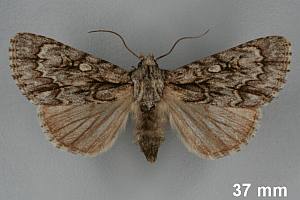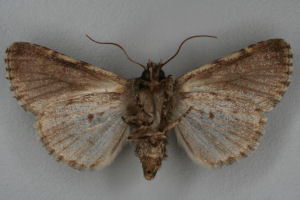Version 21 (neueste) vom 25. April 2023 um 21:09:33 von Jürgen Rodeland
Länder:

 +7Kontinente:EUAS
+7Kontinente:EUAS


 +7Kontinente:EUAS
+7Kontinente:EUASInhalt
1. Lebendfotos
1.1. Falter
1-2: ♂, Griechenland, Peloponnes, südöstlich Patras, Panahaiko-Gebirge, Mindzeika, 13. Mai 2010 Lichtfang (leg., fot. & det.: Egbert Friedrich)Forum
2. Diagnose
2.1. Männchen
2.2. Weibchen
2.3. Geschlecht nicht bestimmt
1-2: Türkei, Isparta, Kovada, 920 m, 10. Mai 1989 (Fotos: Michel Kettner), leg. & det. Michel Kettner
2.4. Erstbeschreibung
1-4: Mann (1862: 370-371, pl. 3 fig. 4) [nach Copyright-freien Scans auf www.biodiversitylibrary.org]
3. Biologie
3.1. Habitat
1: Griechenland, Peloponnes, südöstlich Patras, Panahaiko-Gebirge, Mindzeika, 800 m, 14. Mai 2010 (Foto: Egbert Friedrich)Forum
4. Weitere Informationen
4.1. Andere Kombinationen
- Acronycta orientalis Mann, 1862 [Originalkombination]
4.2. Literatur
- Erstbeschreibung: Mann, J. (1862): Verzeichniss der im Jahre 1851 bei Brussa in Kleinasien gesammelten Schmetterlinge. — Wiener Entomologische Monatschrift 6: (11) 356-371, (12) 373-409 + Taf. 3.
- Wagner, W. (2012): Freiland-Raupenfunde von Acronicta orientalis Mann, 1862 und Catocala disjuncta (Geyer, 1828) in Griechenland (Lepidoptera: Noctuidae). — Nachrichten des entomologischen Vereins Apollo, Neue Folge 33 (1): 5-8. [PDF auf zobodat.at]





















